When printing 3D items and models, you’re undoubtedly hoping for a perfect print every time. That’s the dream, of course, but it isn’t always the reality. Imperfections, cracks, and even gaps can ruin the look and maybe even the performance of your print. Then there are larger models that may have been printed and assembled from many different parts. However hard you try, there always seems to be an unwanted gap.
Fret not! There are ways to prevent these imperfections from happening in the first place. For example, our article Gaps in 3D Prints: How to Fix & Avoid Them may give you insights into the problem. Yet, if you’re still having gap issues or you just want a smoother look, you might want to think about using a filler to finish off your model.
There are many different options available, and these can range distinctly both in ease of use and price. The ultimate decider will of course be the end result, but how do you go about making the right decision? Let’s take a closer look at some of the options and hopefully help you make that choice.
Putty
Putty is a material with high plasticity, similar to clay or dough in texture. It’s typically used in domestic construction and repair as a sealant or filler. However, it can also be a useful tool for filling 3D printed models.
There are different types of putty that could be used for filling cracks and imperfections in your 3D printed model. These usually fall into two categories: premixed and two-part.
Bondo (Premixed)
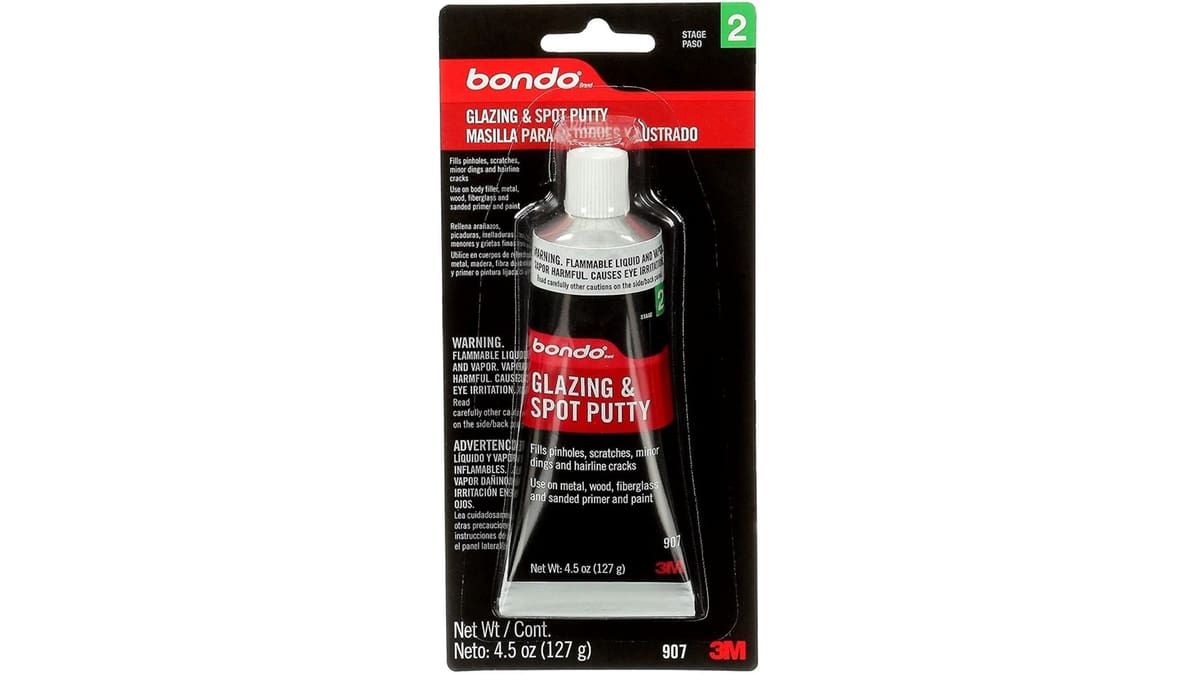
Manufactured by 3M and sold in sizes of 4.5 and 16 oz, Bondo is a ready mixed glazing and spot putty that can be used straight from the package. The material hardens and can be sanded in 30 minutes. It provides a waterproof finish to your 3D print without adding excessive additional weight.
Bondo is mainly available in the US, and while it can be purchased elsewhere online, the costs can increase considerably. A typical 4.5 oz tube costs about $10, which is fairly reasonable for the quantity. Its availability could be a bit of a drawback.
Other downsides to Bondo are that it can be messy and difficult to apply to very small areas, and the fact that it always needs to be sanded could be a negative point. Nevertheless, it’s considered to be the preferred choice of Reddit users.
- Where to find it: Amazon, hardware stores, and supermarkets
- Use cases: Small fixes; only where the model is to be painted
- Ease of use: Easy
- Cost: ~$10
Milliput (Two-Part)
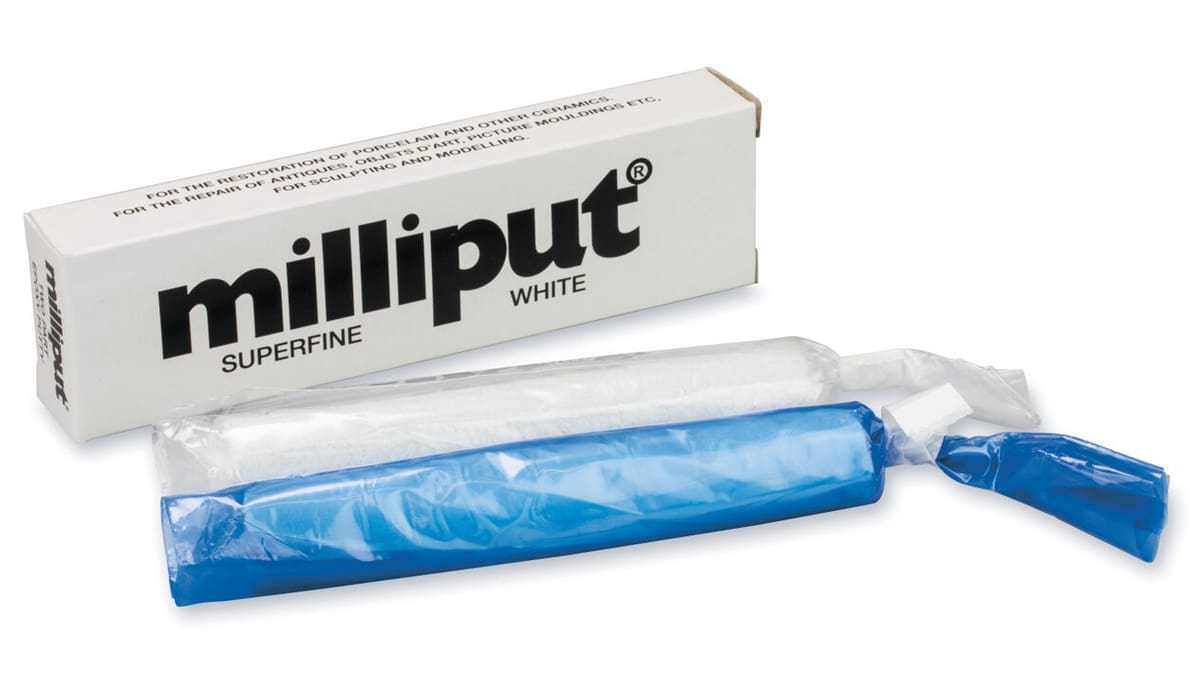
Milliput is a two-part, cold-setting, non-shrinking epoxy putty. It’s available in one carton size (113.4 g), which contains two differently colored sticks of putty; so one 56.7 g stick of each part. There’s a choice of five different finishes, but each one gives essentially the same result. It’s all down to how much work you want to do after it’s dried!
The process of combining the two parts is pretty easy and just requires you to take equal amounts of each stick and squish them together in your hands. As you move it around, you’ll notice that the two colors start to merge to form one material. This is your putty. Applying to the model is pretty simple as well and can be done using just your fingers or any type of small modeling tool.
Milliput dries to a hard, sandable finish in a matter of hours. It’s waterproof (meaning it can even be applied and dry underwater) and is safe to use with no fumes or reported skin irritations.
The downsides are similar to the glazing putty in that it can be difficult to get a smooth surface, so it will need sanding. It can also be quite messy to use, and there’s inevitably going to be waste. It’s only available in a single package size, and as a UK-manufactured item, it’s easier and cheaper to get hold of in the UK.
- Where to find it: Amazon, hardware stores
- Use cases: Small fixes or molding of small replacement model parts; needs sanding and painting
- Ease of use: Easy
- Cost: $5-$10
Apoxie Sculpt (Two-Part)
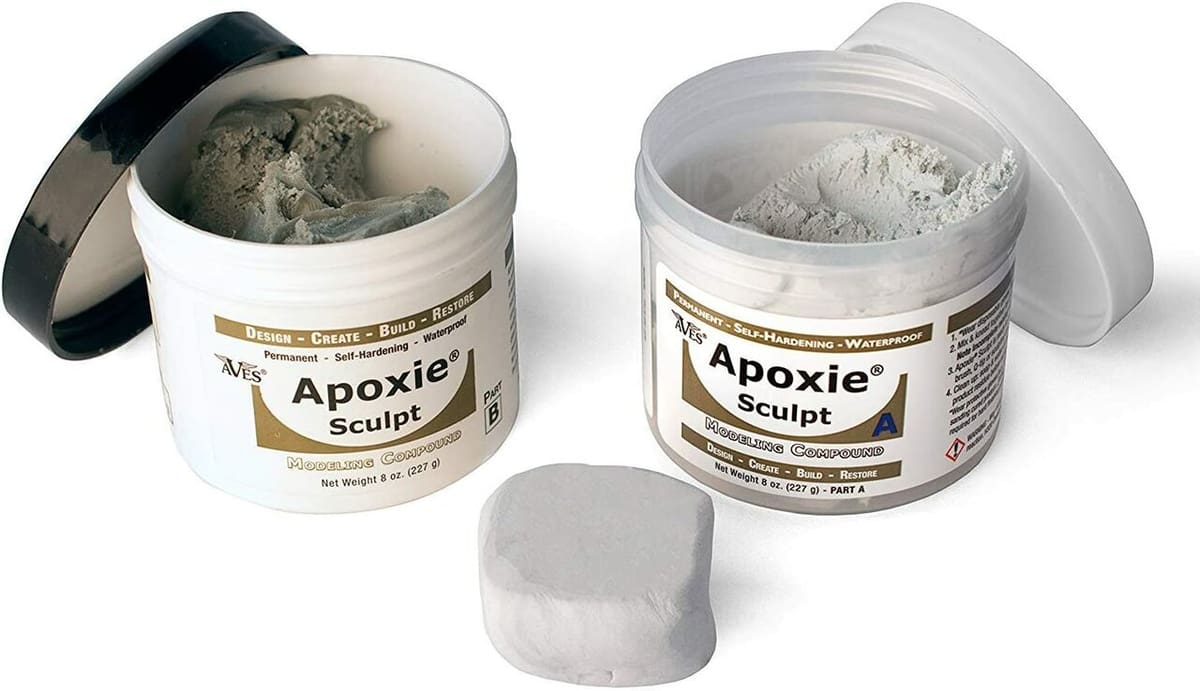
Apoxie Sculpt is another two-part, cold-setting, epoxy modeling clay with similar properties to Milliput.
The basic product comes in two separate tubs (A & B), weighing 1 pound in total, but can also be purchased in much larger volumes, up to 20 pounds. It’s just a case of taking equal amounts from each tub and mixing them together until you’ve got a malleable clay substance. Yet, unlike Milliput, it does come with a warning of possible skin irritation, so gloves might be warranted when mixing and using.
Apoxie Sculpt dries hard to a slightly glossy finish but can be molded and sanded as required. It’s also waterproof and shrink-resistant. Being available in larger quantities may be a bonus if you’re using it regularly, but that obviously comes at an increased cost. The upside is that, if stored correctly, the product has a long shelf life. There’s also a choice of 12 different colors, so painting might not be essential if matched properly.
Downsides are the possible skin irritation, cost, and availability. It’s possible to buy directly from the manufacturer, but it’s not available in many popular online stores.
- Where to find it: Amazon
- Use cases: Small to medium fixes and moldings; needs sanding and painting
- Ease of use: Intermediate
- Cost: $8-$195
Wood Filler
Wood filler isn’t necessarily the first thing you’d think of when filling a plastic 3D printed item, but users report good results. The general availability and variety of brand products are also bonuses that could make it a more viable option.
The material itself is designed to simulate wood, so it has some of the same inherent properties. However, most of the products we’re looking at are also waterproof and much harder than most woods, giving them the advantage as a filler for plastics.
Elmer's Probond
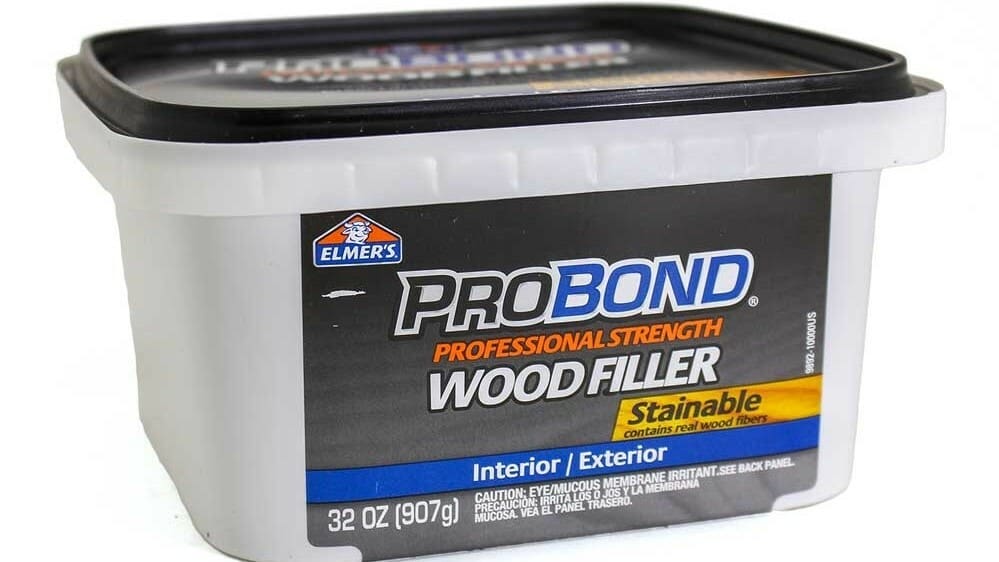
Elmer’s Probond seems to be a popular choice among hobbyists and modelers due to its price and range of sizes and colors. For instance, you can purchase a small 3.25-oz tube for as little as $3 or a 32-oz tub for only $10. Obviously, color and texture variations may cost more but not excessively so.
The product is pre-mixed and usable straight from the tube or tub, but because it’s more viscous than putty, you’re definitely going to need application tools. Caution should also be taken due to potential toxicity and skin irritation. Once dry, it’s just a case of sanding and finishing to your desired standard, and then you’ve got a permanent, strong, and hard-wearing filler.
The one major downside to Probond, according to users, is that it gives off a strong and unpleasant smell, so it’s not advisable to be used in enclosed spaces. Have a look at this YouTube video, which gives an idea of how to use Probond and the results you can achieve.
- Where to find it: Amazon, hardware stores
- Use cases: Medium to large surface areas; may need sanding and painting
- Ease of use: Intermediate
- Cost: $3-$24
Bondo
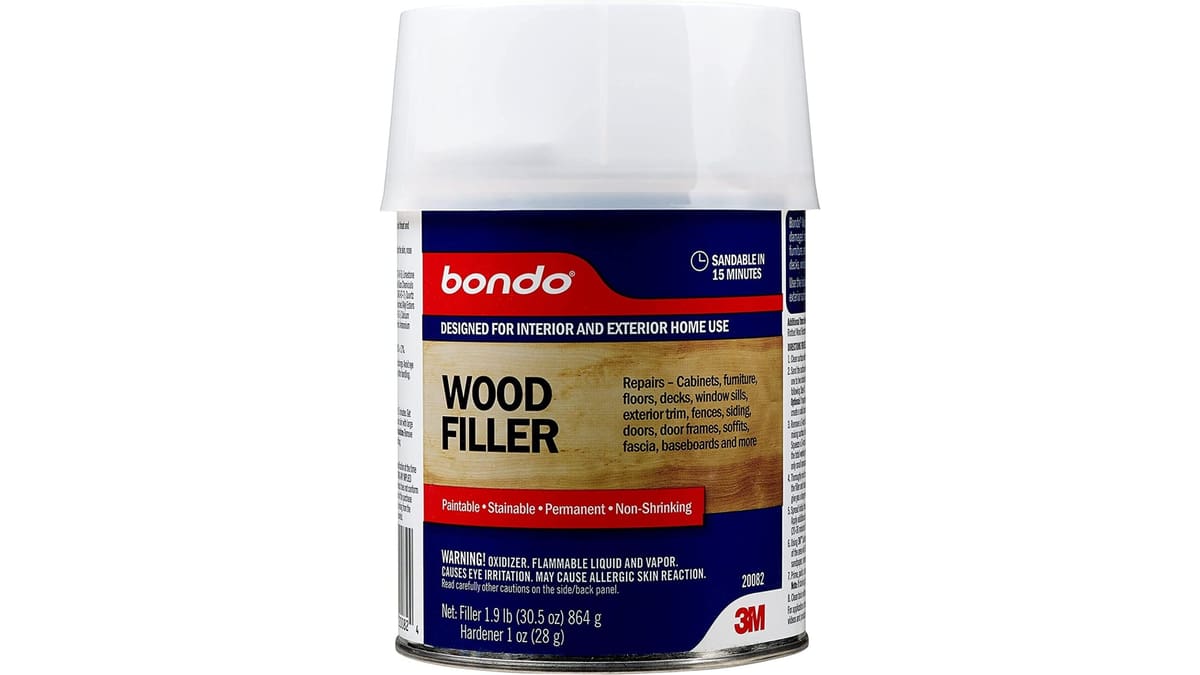
We’ve seen that Bondo makes a type of putty, but what about their wood filler? Well, there isn’t really much variation in the consistency or chemical makeup, so it could be hard to add anything that hasn’t already been mentioned.
However, the main difference with Bondo is that, similar to its putty, it comes in two parts. The main portion of the product is the wood filler itself, but it also comes with a separate hardening agent. This has the potential to make for a much harder and stronger finish but can also make for a more difficult preparation and application.
Bondo comes in two sizes: 0.75 US pint and 1 quart. Each has an appropriate amount of the hardening agent included. The downside is the cost and availability, as few outlets stock the smaller tub, so you’ll probably end up having to go for the larger one. Prices start at around $11 for the small tub and $27 for the larger one.
- Where to find it: Amazon, hardware stores
- Use cases: Small to medium surface areas; needs sanding and painting
- Ease of use: Easy
- Cost: $11-$27
Primer/Filler/Smoother
This group of fillers is primarily looking to hide the smaller, hairline cracks and imperfections that may occur during a 3D print.
If you’re printing an item that requires a perfectly smooth surface, any layer lines or small defects caused by support removal can ruin that look. Primers, fillers, and smoothers can solve this problem with a judicious application in the right place and in a fairly quick and easy way.
Acrylicos Vallejo Plastic Putty
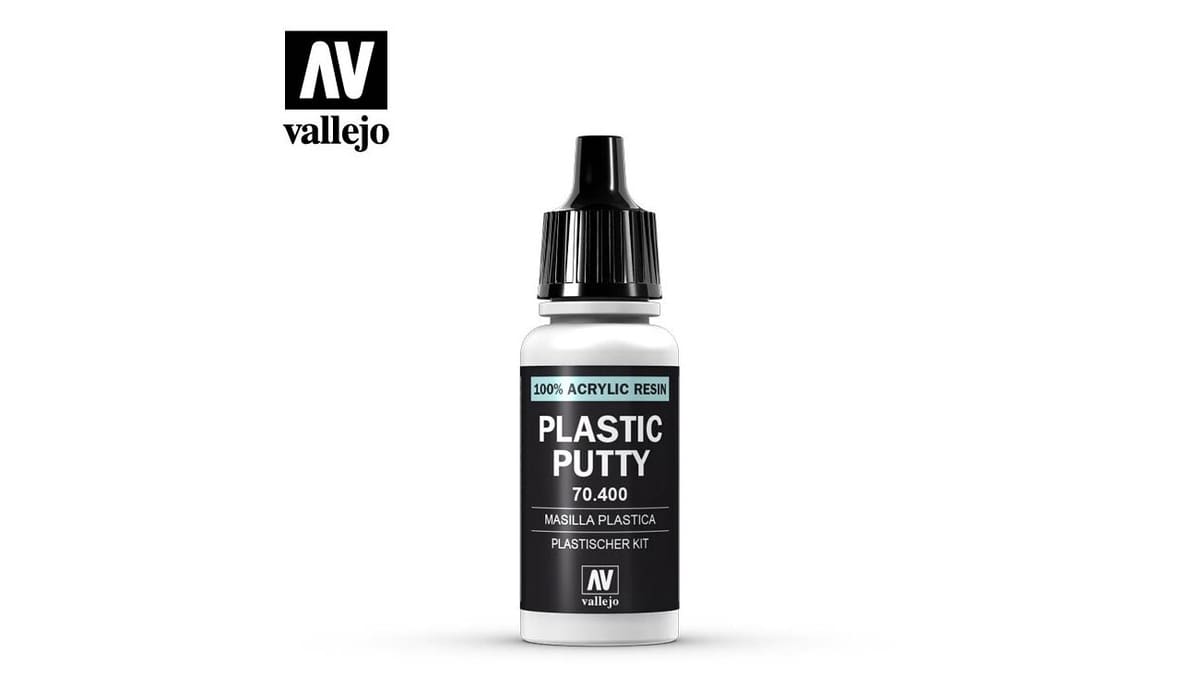
Acrylicos Vallejo is a well-known name in the world of acrylic model paints, with a vast range of colors and paint types available. Part of the process of having a good paint job on your 3D printed model is proper preparation. With any application of paint onto a porous surface, it’s always advisable to add a coat of primer first, but what about preparing the surface prior to that?
If there are any imperfections in the surface to be painted, they’ll show up. So Acrylicos Vallejo has produced a brush-on plastic putty to “iron out” those small imperfections prior to painting. Unlike the other putties we’ve looked at, this isn’t designed to fill holes or large cracks, but more for smoothing out hairline faults which may not even be visible until after painting the first coat.
The putty dries quickly to a hard finish that can be sanded, but hopefully, with the right application, this won’t be necessary. The product is waterproof and sticks very well to the target surface.
As you’ll probably only use this over a small area, the package sizes are relatively small. There’s the standard-sized 17-ml “eye dropper” bottle or the slightly larger 20-ml tube. The only real downside is that it can dry out fairly quickly if you don’t store it properly or close the cap!
- Where to find it: Amazon, other online retailers, and hobby/craft stores
- Use cases: Small surface areas and hairline imperfections; may need sanding and painting
- Ease of use: Easy
- Cost: $5-$7
XTC-3D
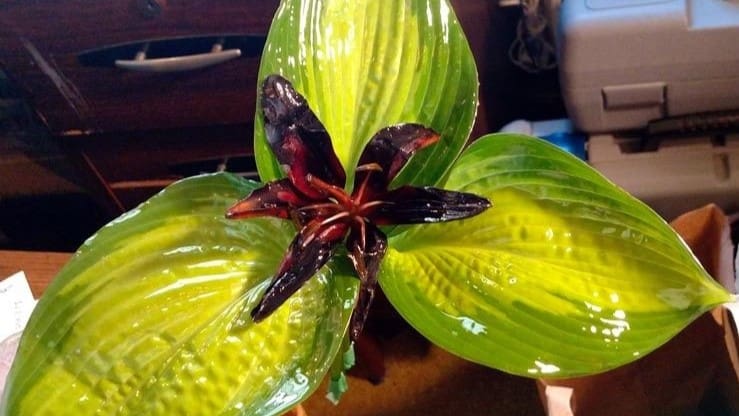
Although the name doesn’t necessarily roll off the tongue, XTC-3D is towards the higher end of the filler options we’re looking at. That said, this option might not be considered a “filler” as such.
XTC-3D is another brush-on applicant designed to smooth the surface of your 3D print. Still, instead of actually filling the gaps or imperfections, it provides a shiny and smooth top coat that effectively hides the gaps. It finishes curing in about four hours and can be sanded if necessary, but it’s unlikely to need it.
Preparation requires mixing two parts at a ratio of 2:1, and you get a 10-minute working window before the solution becomes unusable. Application is via the supplied paint pad, and it’s advised to wear gloves while mixing and applying.
Yet, such ease of use and quality finish does cost a little more and a 24-oz kit costs around $45 (plus shipping). Availability isn’t widespread, so searching for a reasonable price, and delivery option online is advisable.
- Where to find it: Online retailers, hardware or specialist stores
- Use cases: Medium to large surface areas; doesn’t need sanding or painting
- Ease of use: Advanced
- Cost: ~$45
Rust-oleum
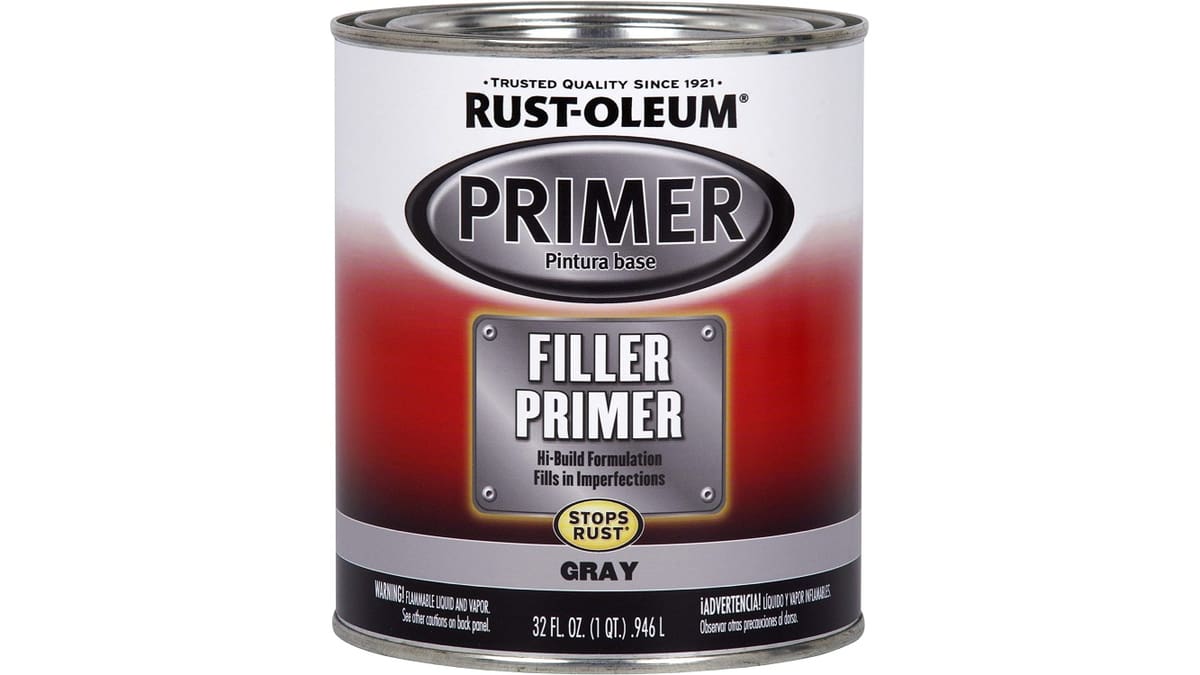
Rust-oleum is probably best known for its use in the automotive industry as a primer and filler for vehicle bodywork. The difference, however, between this and other fillers, such as Vallejo or XTC-3D, is that Rust-oleum comes in both an aerosol spray can and a brush-on form. The spray version might make be easier to apply, but it will have harmful fumes.
Having said that, the quality of the finish is good and is aimed mainly at smaller imperfections rather than bigger cracks and gaps. Once applied, it takes about two to four hours to dry and can then be sanded and painted as required.
The size of the can is 12 oz, so it’s not a massive amount, but it only costs around $14.
- Where to find it: Amazon, other online retailers, hardware or automotive stores
- Use cases: Medium to large surface areas; may need sanding and painting
- Ease of use: Intermediate
- Cost: ~$14
UV Resin
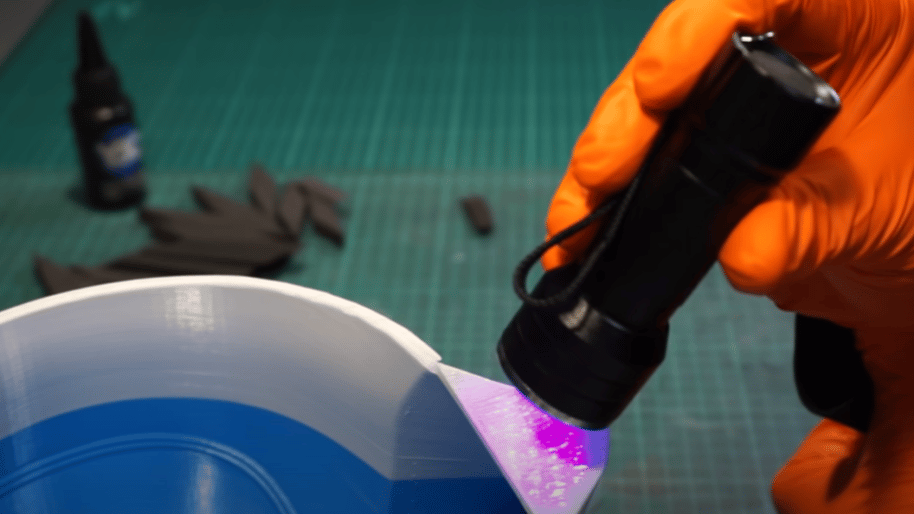
While resin 3D printing is known for its generally superior resolution, it’s not as accessible or affordable as FDM. Combine the best of both worlds by using UV resin to smooth and perfect your FDM prints.
This simple technique involves putting a thin layer of resin over the layer lines and other imperfections on your print. Apply the resin with a brush or sponge and work in small areas to control the shape better. Then, you’ll cure it with a UV flashlight for about 10 seconds and sand it to achieve a smooth surface.
Be sure to practice proper safety precautions. Wear gloves, safety goggles or glasses, and a NIOSH approved respirator to protect against harmful fumes. When sanding, wear a particle mask to avoid breathing in dust.
- Where to find it: Amazon
- Use cases: Small model cracks or imperfections; may need sanding
- Ease of use: Easy
- Cost: $6-$15
Model/Plastic Filler
Plastic models and construction kits have been around for many years before the advent of 3D printing. As a result, many products serve to glue, repair, and fill plastics on a relatively small scale.
These products are now finding a new lease on life by providing the same kind of support for 3D printing modelers.
Humbrol
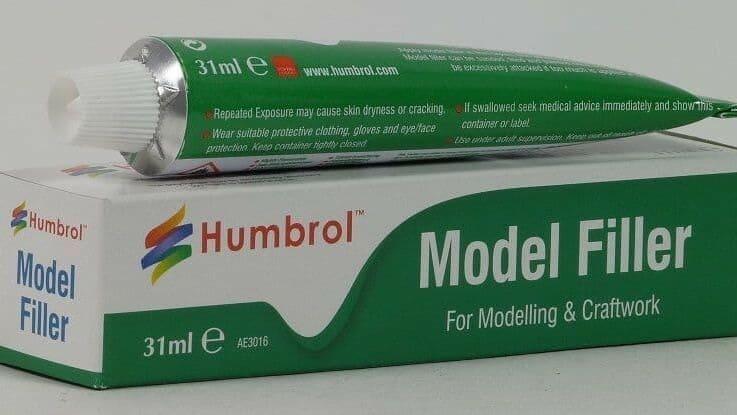
Humbrol is a well-known name in the world of model making, with a wide range of enamel paints and glues. As with the other companies we’ve mentioned, such as Vallejo, Humbrol is aware that a good finish from their paints can only be achieved with a good start.
This is where Humbrol’s Model Filler comes in. Similar to the brush on putties and fillers, this product fills hairline cracks and gaps between plastic parts as well as the usual imperfections we’ve discussed. The product dries fully in 24 hours and can be sanded with a fine grade of sandpaper.
As this is primarily aimed at model kit makers or miniaturists, it only comes in a small volume pack (31 ml), so it may not be viable for use on larger 3D printed models. Nevertheless, if you’re looking for something that’s handy and works on smaller objects, this is an ideal product.
- Where to find it: Online retail stores, specialist hobby/craft stores
- Use cases: Very small model cracks/imperfections; may need sanding and painting
- Ease of use: Easy
- Cost: ~$8
Revell Plasto

Revell Plasto is similar to the other brush-on putties we’ve looked at, but it’s important to distinguish this as a specific product made for plastics.
As with Humbrol, Revell has a reputation for making plastic scale model kits and a range of paints and glues. Plasto is their version of a plastic filler specifically aimed at repairing and finishing gaps and imperfections in their kits. However, as it’s designed for use with plastics, it’s ideal for filling 3D prints.
Once again, aimed at model kits, it only comes in a small 25-ml tube – which isn’t ideal for 3D printing, but it certainly does the job. Plasto dries to a hard finish (no information on drying times is advertised) and can be sanded smooth.
It’s worth noting these products are toxic and highly flammable, so caution should be taken when using and storing them.
- Where to find it: Online retail stores, specialist hobby/craft stores
- Use cases: Very small model cracks/imperfections; may need sanding and painting
- Ease of use: Easy
- Cost: ~$5
Spackle-Paste/Plaster
Much like wood filler, spackle-paste (a.k.a. plaster) might not be the first choice for filling 3D models, but it’s certainly used as such.
In the same vein as wood filler, spackle-paste is designed to mimic the material it’s being used to repair. It follows, then, that the strength of the dried and finished paste would only be as good as that of a plaster wall. The assumption is that it’s susceptible to breaking and crumbling.
The same could be said of 3D printed plastics, but with the right preparation and treatment, combining the two can produce satisfactory results.
As you’ll see with the products in this group, there’s a distinct similarity between the composition of the material, presentation, and package quantity. With that in mind, we’ll try to avoid repetition as much as possible!
Ronseal
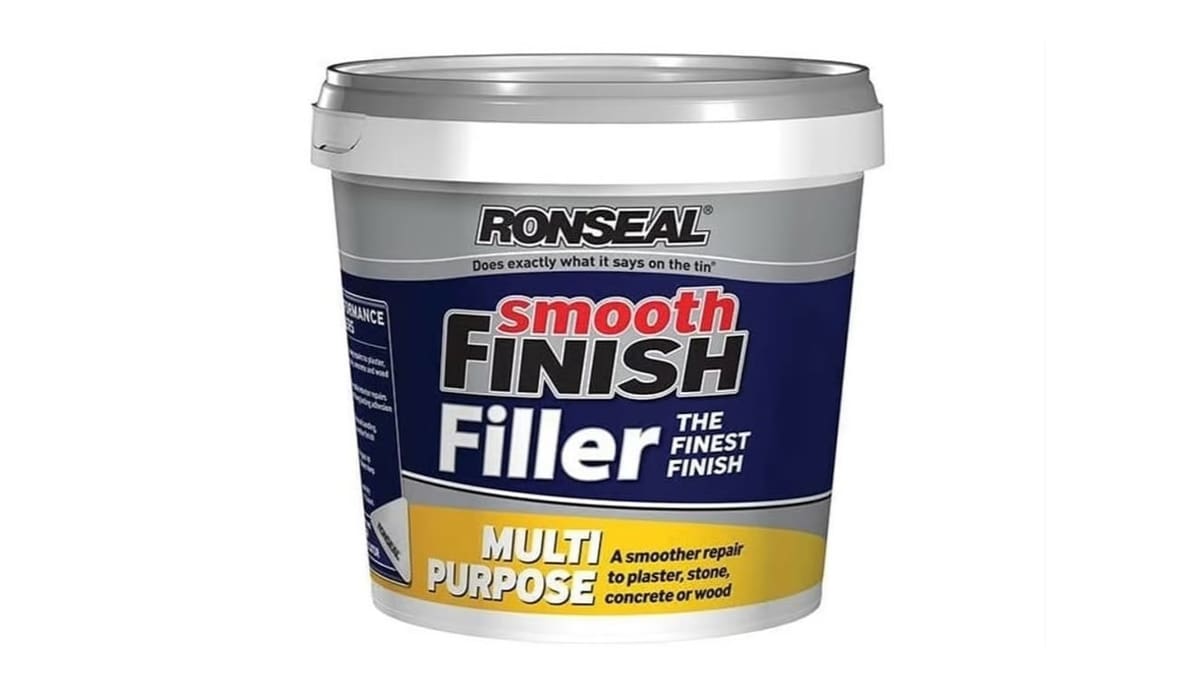
Ronseal‘s Multi Purpose Smooth Finish Filler comes in relatively small containers but is handy enough to use on an average-sized print. The product is ready-mixed and easy to apply using either a small tool or your fingers. Tub sizes (confusingly) vary from 330 g to 600 ml and cost around $20. There are also several different variations on a theme, such as “Quick Drying”, “5 minute”, and “Big Hole”. However, it’s the “Multi-Purpose” variant that we’re interested in.
Hopefully, you won’t have one in your model, but it can fill holes up to 20 mm wide and leave a tough repair that won’t shrink or crack. The drying time is around two hours, after which it can be easily sanded to a smooth finish.
- Where to find it: Amazon, hardware and general stores
- Use cases: Medium to large fixes; needs sanding, sealing, and painting
- Ease of use: Easy
- Cost: $18-$20
Bond It
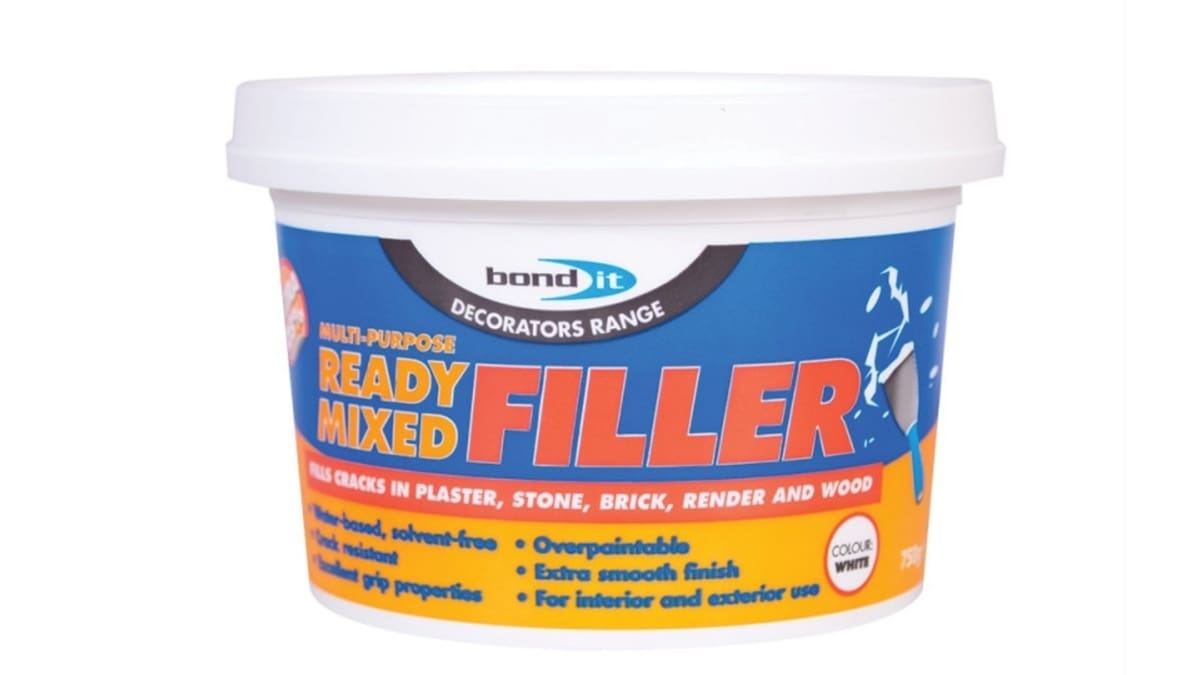
Bond It is a ready-mixed all-purpose filler that can be used straight from the tub with no mixing or preparation. Although the technical specifications state that it isn’t suitable for use on plastics and metals, users have reported good results when using it for small areas.
Drying time under normal conditions is around eight hours, after which it can be sanded and painted. However, when using spackle-paste as a filler for plastics, it’s highly recommended to apply an appropriate sealant once dried.
This comes in a 750-g tub and costs around $6, which is much cheaper than other options in terms of quantity.
- Where to find it: Online retailers, hardware and general stores
- Use cases: Medium to large fixes; needs sanding, sealing, and painting
- Ease of use: Easy
- Cost: ~$6
Polyfilla
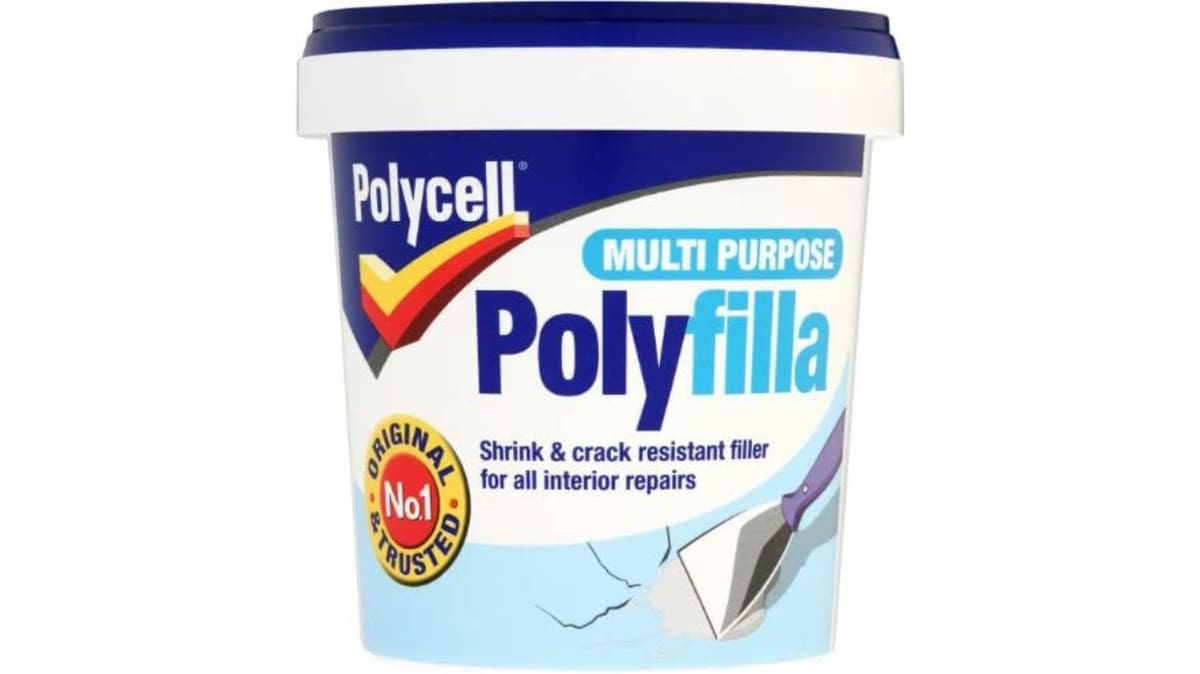
Polyfilla is slightly different because it’s available in both pre-mixed tubs and powder packets. However, using powdered materials such as this or something like cement is notoriously difficult to keep dry in storage, so we’ll look solely at the pre-mixed product in this case.
This is probably the best known and claims to be the original multi-purpose plaster filler, so its reputation precedes it. The properties of the material are the same as those above, and it provides the user with a hard, dry, and sandable finish within a few hours.
The pre-mixed material comes in either 600-g or 1-kg tubs or a 330-g tube, and costs range from $8 to $12. If purchasing in the US, costs can be higher, since it’s a UK-based product.
- Where to find it: Polycell, hardware stores
- Use cases: Medium to large fixes; needs sanding, sealing, and painting
- Ease of use: Easy
- Cost: $8-$12
License: The text of "The Best 3D Print Fillers" by All3DP is licensed under a Creative Commons Attribution 4.0 International License.
